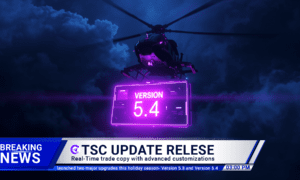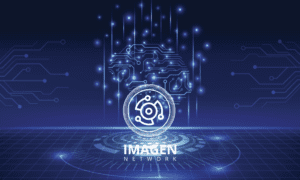A seasoned software architect shares how his AI systems have helped cut review time in finance and bring structure to messy medical data.
AI is everywhere. It writes our texts, recommends what we watch, drives cars, and helps diagnose illnesses. What once seemed futuristic is now built into everyday tools — often without us even noticing.
According to a report by Synopsys, AI is already capable of identifying pedestrians, detecting obstacles, reading road signs, and making split-second decisions to prevent accidents in advanced driver assistance systems. In other words, AI is no longer just assisting us — it’s making life-and-death decisions in real-time.
And if AI can be trusted to prevent car crashes, it’s no surprise it’s now being adopted in other high-stakes sectors — like healthcare and finance. AI now writes patient records, scans X-rays, predicts diseases, recommends treatments and summarizes lab results in seconds. In finance, it reviews marketing materials, flags compliance risks, automates audits, and slashes review times. Far from being just a buzzword, AI is already working behind the scenes in some of the world’s most complex industries.
One of the people behind this shift is Mantu Singh, a software architect who has spent the past few years bringing AI into everyday business. A senior member of the Institute of Electrical and Electronics Engineers (IEEE), Singh brings a disciplined engineering mindset to the way he designs and deploys AI systems. In sectors like finance and healthcare—where rules are strict and the stakes are high—he’s helped build systems that relieve teams’ pressure, speed up decision-making, and cut through routine work. His focus has always been the same: use technology not for the sake of it but to solve real problems where it matters most.
In this interview, Mantu Singh reveals how AI is no longer a lab experiment — it’s now reviewing ads for top banks and interpreting cancer patient records. Here’s how he makes it work in the real world.
Mantu, we hear about AI everywhere — but what’s really driving this shift, especially in complex fields like compliance and healthcare?
There’s a clear reason why these spheres are leading this shift. Both sectors are heavily regulated, yet they rely on vast volumes of unstructured and fast-moving data. Traditional manual processes simply can’t keep pace with the speed and accuracy required today — and AI fills that gap.
In financial services, for instance, I led the development of an AI-powered advertising compliance solution, which processed over 7 million submissions in just one year and helped firms cut review time. That kind of impact is transformative — and it wouldn’t be possible without scalable AI architectures tailored specifically for compliance workflows.
In healthcare, you also worked on an oncology analytics platform that dealt with complex medical records. What kind of challenge was that — and how did AI help solve it?
That was a very different kind of challenge compared to compliance work. Medical records — especially in oncology — can be incredibly messy. They’re often long, inconsistent, and full of specialized language. There’s no standard structure, and much important clinical information is hidden in free-text notes or scanned documents.
We had to build a system that could make sense of all that. First, we used OCR—basically a tool that turns scanned documents into readable text. Then, we added an AI layer using transformer-based NLP models—the kind of technology that can actually understand language in context. Together, these tools helped us extract the information that really matters to doctors so they didn’t have to manually dig through hundreds of pages.
That experience really stuck with me. It showed how important it is to build AI that doesn’t just process data — it actually helps people make better, faster decisions in the real world.
Seven million submissions and 80% faster reviews — your AI solution set a new standard for compliance technology in a tightly regulated industry. What made it so effective in achieving both speed and accuracy at scale?
The effectiveness came from designing AI not as a side feature but as the core engine of the process. We used transformer-based NLP models (briefly, it’s a kind of AI that understands and processes language in context, similar to how tools like ChatGPT work), trained on proprietary compliance data, and integrated them into a workflow system that regulators could trust.
We weren’t just automating steps — we were redefining how compliance could work. By combining semantic analysis, decision heuristics, and modular review layers, we created a system that’s faster, more accurate, and easily auditable.
But perhaps just as importantly, we ensured the architecture could evolve — whether it’s new regulations or shifting content formats. That’s what makes it future-ready.
You said something interesting: ” We weren’t just automating steps; we were redefining how compliance could work.” You took a similar approach in healthcare with your oncology analytics platform, which extracted structured data that weren’t written in a standard format. What made this project fundamentally different—and why did it require a different kind of AI thinking?
That’s a great point — the difference was both in the nature of the data and the way decisions are made in healthcare. In compliance, you deal with structured materials — documents with defined sections, categories, and terminology. But medical records or EMRs in oncology, are a completely different beast — hundreds of pages, inconsistent formats, medical jargon, and clinical context that changes case by case.
So the challenge wasn’t just technical — it was about teaching AI to understand clinical nuance. We built a full pipeline: first, we used OCR (optical character recognition) with a tool called Tesseract to convert scanned documents into searchable text. Then we applied transformer-based NLP models — a type of AI that understands and interprets human language in context — to extract and make sense of the medical information. In this context, it wasn’t enough to automate — the system had to read between the lines, recognize medical patterns, and be genuinely helpful in real-time decision-making.
That experience really shaped my thinking about how AI systems must adapt not just to data but to the way people use that data in high-stakes environments.
That brings us to another important point — scalability. You’re not just building smart models; you’re building systems that work at scale and in production. At one point, you also modernized a major compliance platform’s API infrastructure, containerized its services, and led a full cloud migration. In your view, what separates a promising AI prototype from a truly enterprise-grade AI product?
A working model is only 10% of the job. An enterprise-grade AI solution needs resilience, maintainability, observability, and integration readiness. In that project, for example, we didn’t stop at the NLP model. Firstly, we modernized the legacy APIs — these are the system’s communication channels, and many of them were outdated and inflexible. We rebuilt them so that different system parts could interact more efficiently and securely, especially when handling sensitive compliance data.
Then, we introduced Azure API Management, which gave us greater control over how those systems communicate — who can access what, how data flows, and how to secure those connections in a regulated environment.
We also moved the entire infrastructure to containerized microservices on Kubernetes. That means we broke down a large, monolithic application into smaller, independent components that can run, scale, and be updated separately. It’s a major shift that makes the system far more scalable, easier to maintain, and less prone to failures — you can fix or improve one part without touching the rest.
This invisible architecture around the model makes the solution not just smart but reliable and ready for real-world use at scale—and that’s also why we’ve started to see other teams model their systems after ours.
Your DevOps pipelines and search models are being replicated across firms. What makes your systems so easy to follow — and what do you think can’t be copied?
Replicability often comes from clarity — when something works well, it’s natural for others to adapt it. That’s good for the industry. But what can’t be copied is the deep problem-solution alignment. Many people can replicate a pipeline, but not the thought process that created it — the reasoning behind every model threshold, every architectural tradeoff, every API versioning decision.
In that sense, it’s not just code that matters; it’s the philosophy behind the architecture—and teams need to build that internally rather than borrow it externally.
And that philosophy of thoughtful architecture shows across your career. What principles do you rely on when designing scalable, long-lifecycle systems?
For me, there are three core principles that guide system architecture. First, I always aim to decouple everything — data, computing, and logic — so that each part of the system can evolve independently. Second, I design for observability and graceful failure, ensuring that if something goes wrong, it’s easy to detect and doesn’t bring everything down. Third, I keep the interfaces simple for end-users, even if the complexity lies behind the scenes. You can’t always predict how business needs will change, but you can build an architecture that’s ready to adapt. I’ve followed this approach at all my places of work, and it’s consistently helped systems scale and stay resilient over time.
For your achievements in scalable system design, cloud migration, and interdisciplinary innovation, you were elected a Fellow Member of the Hackathon Raptors Community—a highly selective global network focused on solving real-world challenges through technology. How do you view this kind of peer recognition from a global technology community?
It’s a meaningful form of validation—especially because it comes from peers who understand both the complexity and the impact of the work. Being part of a community that values innovation, cross-disciplinary thinking, and real-world problem solving reinforces the importance of building solutions that go beyond technical success. It’s not just about writing good code; it’s about shaping systems that make a difference across industries and improve how people work and live.
For those who aren’t part of such communities yet, my advice is simple: focus on building things that matter. Solve real problems, document your thinking, and stay curious. Recognition tends to follow when your work consistently creates value—not just for a product, but for the people using it.
As more companies jump into AI without clear strategies, what’s your advice for smaller teams or startups who want to scale AI responsibly but don’t yet have large architecture teams in place?
Start small but think modular. Focus on one painful business problem and solve it well with AI. Don’t rush into large monolith models or flashy dashboards — focus on clean data, efficient workflows, and measurable outcomes.
Also, invest in cross-functional collaboration early. AI success isn’t just technical — it’s cultural. If your product people, data teams, and engineers speak the same language, your AI solutions will scale with purpose — not just complexity.





























